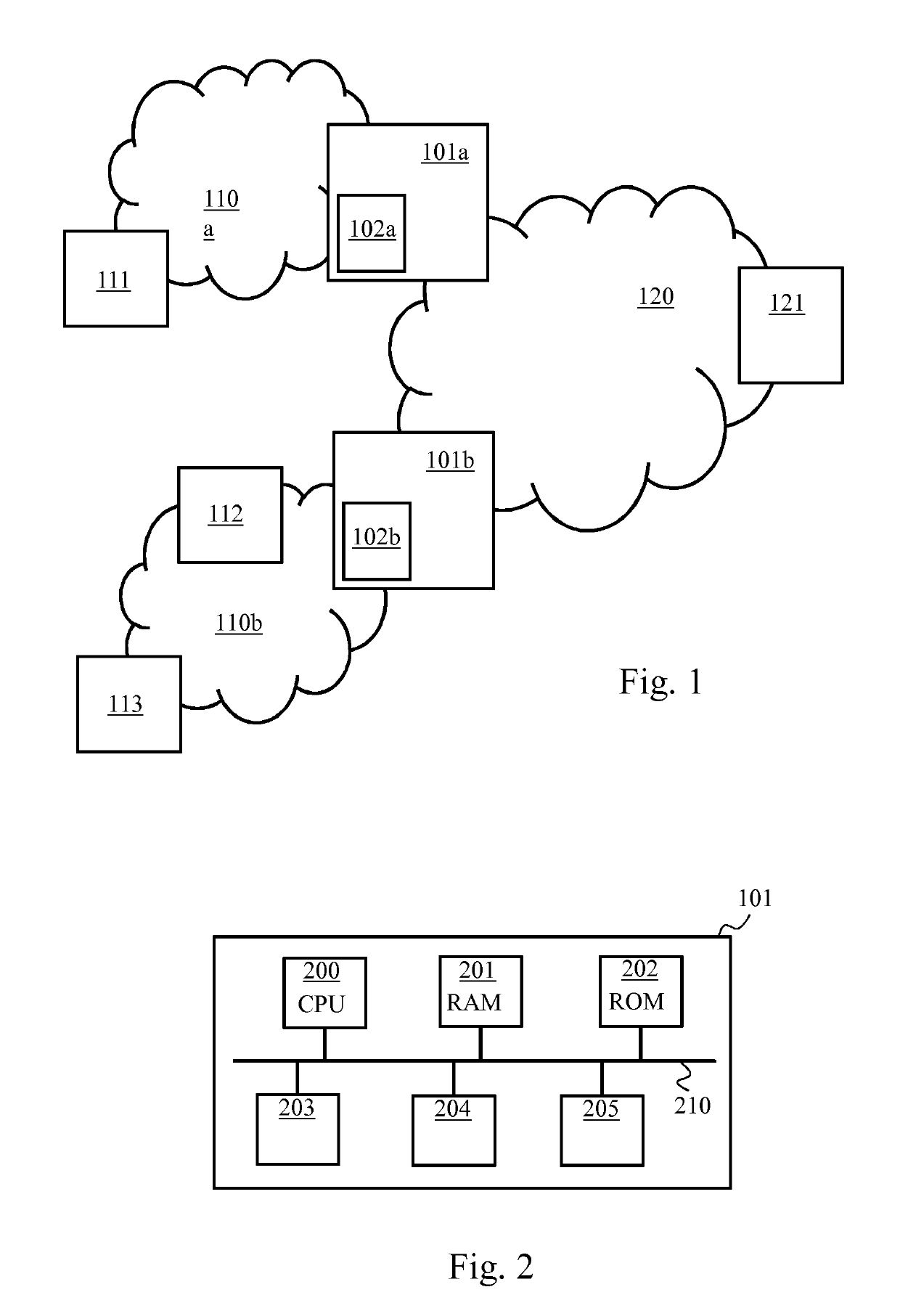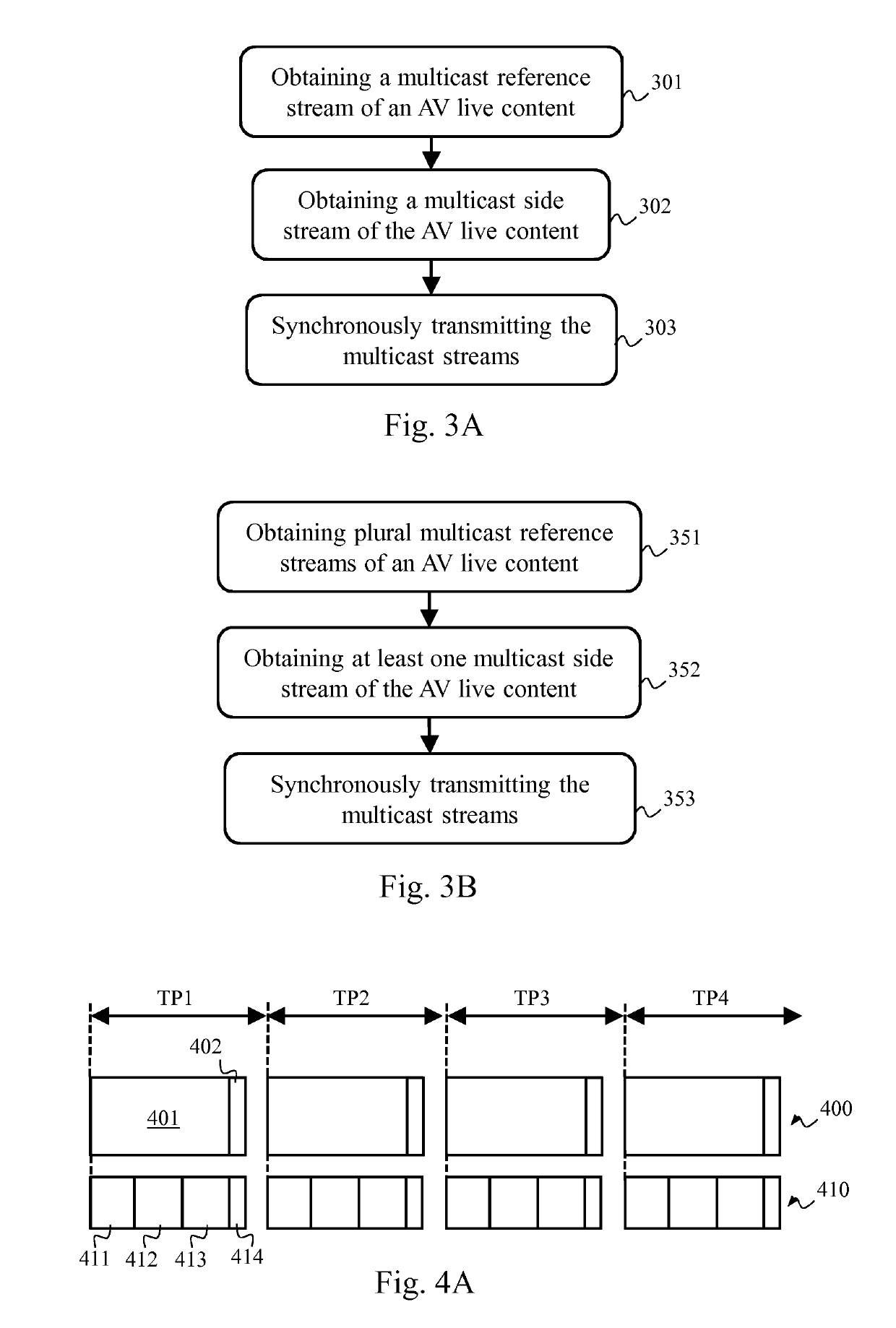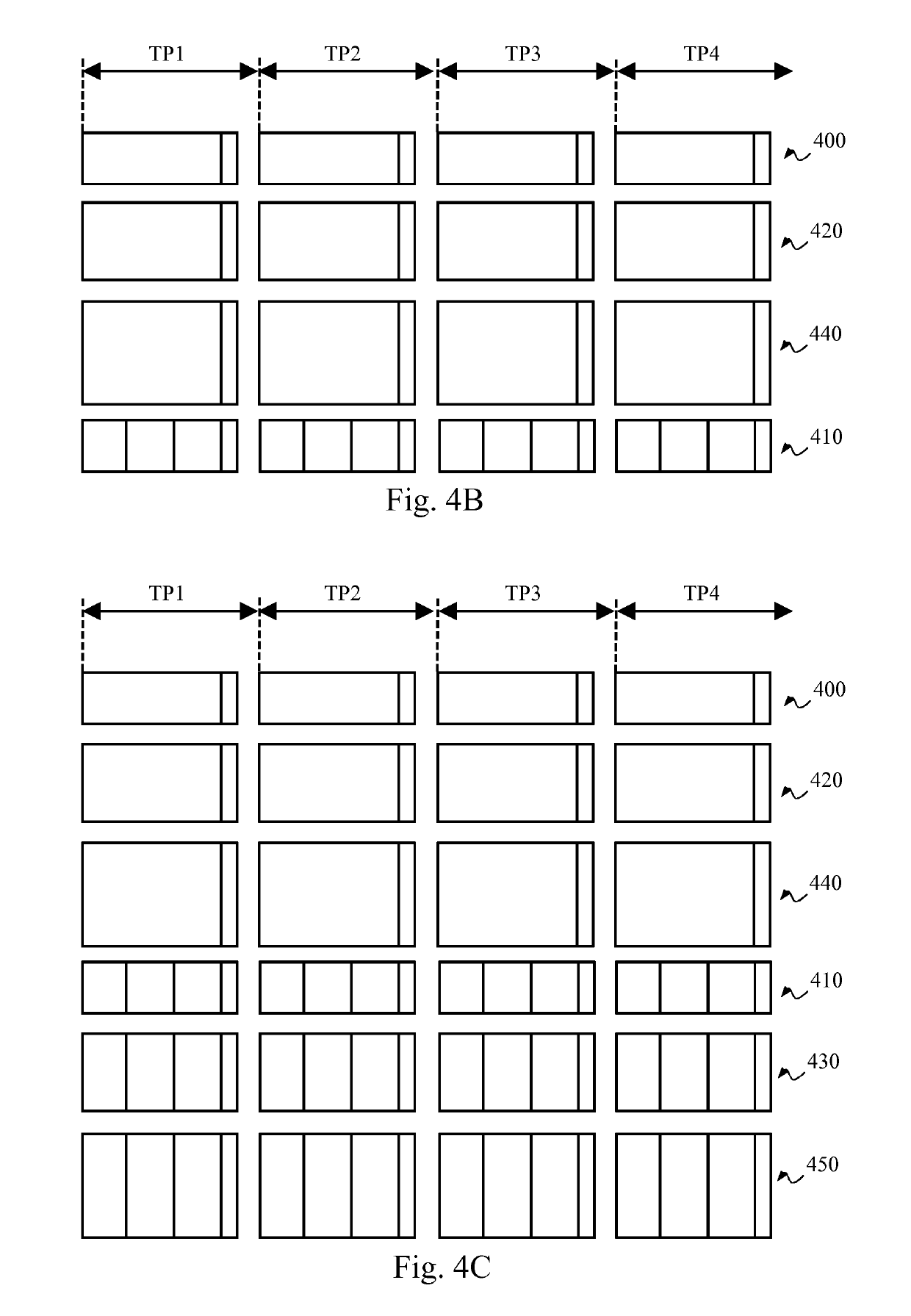Method for delivering an audio-video live content in multicast form
a multi-cast and live content technology, applied in the field of audiovisual content delivery, can solve the problems of large scalability, unsustainable back-end infrastructure of http-based streaming technology, limited impact on back-end infrastructure processing, etc., and achieve the effect of simple and cost-effectiv
- Summary
- Abstract
- Description
- Claims
- Application Information
AI Technical Summary
Benefits of technology
Problems solved by technology
Method used
Image
Examples
first embodiment
[0065]FIG. 3A schematically represents an algorithm, performed by the server device 121, for AV live content delivery, according to the present invention.
[0066]In a step 301, the server device 121 obtains an AV live content to be provided via the second network 120 in a multicast way. The server device 121 then obtains or forms a multicast stream of chunks of the obtained AV live content. The form of the multicast stream is such that one chunk of the AV live content is provided per frame of the multicast stream. Considering that time is divided into successive transmission periods, the server device 121 intends to transmit one frame of the multicast reference stream in each transmission period, i.e. one chunk per transmission period.
[0067]In a step 302, the server device 121 obtains a multicast side stream for the AV live content. The form of the multicast side stream is such that a plurality of M chunks of the AV live content is provided per frame of the multicast side stream, pref...
second embodiment
[0088]FIG. 3B schematically represents an algorithm, performed by the server device 121, for AV live content delivery, according to the present invention.
[0089]In a step 351, the server device 121 obtains an AV live content to be provided via the second network 120 in a multicast way. The server device 121 then obtains or forms a plurality of multicast streams of chunks of the obtained AV live content. The form of the multicast streams is such that one chunk of the AV live content is provided per frame of each multicast stream. Considering that time is divided into successive transmission periods, the server device 121 intends to transmit one frame of each multicast reference stream in each transmission period, i.e. one chunk per transmission period.
[0090]Each multicast reference stream corresponds to a respective resolution of the AV live content, in order to allow client devices to benefit from ABS. It means that, even though two frames of two distinct multicast reference streams ...
PUM
 Login to View More
Login to View More Abstract
Description
Claims
Application Information
 Login to View More
Login to View More - R&D
- Intellectual Property
- Life Sciences
- Materials
- Tech Scout
- Unparalleled Data Quality
- Higher Quality Content
- 60% Fewer Hallucinations
Browse by: Latest US Patents, China's latest patents, Technical Efficacy Thesaurus, Application Domain, Technology Topic, Popular Technical Reports.
© 2025 PatSnap. All rights reserved.Legal|Privacy policy|Modern Slavery Act Transparency Statement|Sitemap|About US| Contact US: help@patsnap.com



